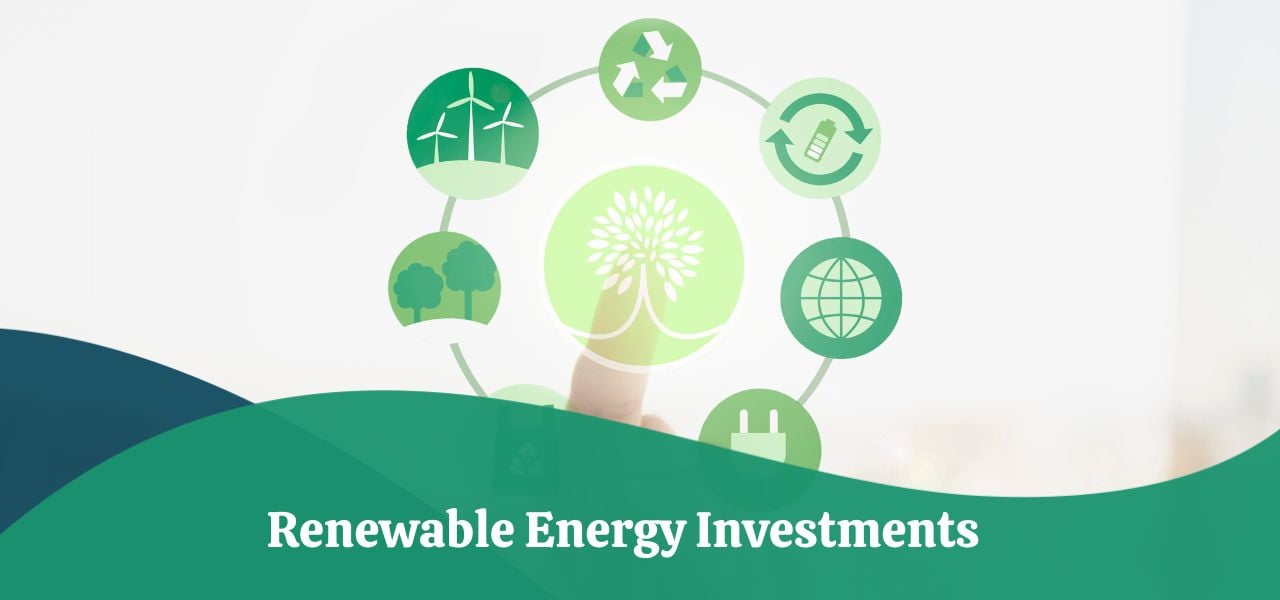Clean Energy and AI Race: How the US-China AI Competition Depends on Power Innovation
-
 Admin
Admin - 27 Apr, 2025

The global race for dominance in artificial intelligence (AI) is rapidly unfolding, with the US and China at the forefront. However, this competition is not only driven by advancements in AI technologies but also by a critical, yet often underappreciated factor: clean energy. Clean energy is emerging as a linchpin for AI infrastructure, and the outcome of the US-China AI competition hinges largely on each nation’s ability to leverage renewable power sources to support AI’s massive energy demands.
The Role of Clean Energy in Accelerating the US-China AI Race
As AI models become increasingly complex and the demand for data processing grows, the need for reliable and sustainable energy sources to power data centers and AI operations has never been greater. For both the US and China, the rapid expansion of AI capabilities is intricately tied to clean energy infrastructure.
AI’s hunger for energy continues to rise at an alarming rate. By 2025, the data center market, which serves as the backbone of AI, is expected to grow by nearly $275 billion in China. Similarly, in the US, the demand for electricity has soared, with some data centers consuming as much energy as mid-sized cities. The challenge is clear: who can secure a sustainable energy future while staying ahead in the AI race?

China has taken aggressive steps in this direction by pairing its industrial strategy with massive investments in renewable energy. In 2024, China invested more in renewable energy than the US, EU, and UK combined, showcasing its commitment to maintaining an edge in both AI and clean energy sectors. Meanwhile, the US has made strides in the renewable energy sector, but energy security remains a significant challenge, especially when coupled with the rising demand for AI infrastructure.
How Energy Security Shapes the Future of AI and Technology
The concept of energy security has evolved in the modern world. Historically, countries focused on securing reliable access to fossil fuels like oil and gas. However, in today’s AI-driven world, energy security now means ensuring an adequate supply of clean energy to power future technologies. This is particularly crucial in the AI race.
For both China and the US, the energy that powers AI infrastructure is as vital as the innovation itself. AI models, such as those used for autonomous vehicles or natural language processing, require enormous computational power. These models cannot function at scale without continuous, abundant, and renewable energy. Without it, the AI race becomes a race to secure the necessary resources, which is exactly what’s happening now between these two nations.
China’s ambitious energy policies focus not only on AI but also on expanding renewable energy sources such as solar, wind, and hydroelectric power. Meanwhile, the US has seen growing tensions regarding its energy policies. With the Russia-Ukraine war and rising energy prices, the US energy policy has faced significant challenges, especially as the country strives to power its burgeoning AI infrastructure.
The US Challenges: Balancing Rapid AI Demand with Renewable Power
In the US, the increasing complexity of AI models and the widespread use of cloud computing are leading to a surge in electricity demand. Some data centers now consume a significant percentage of the state’s power load, and in areas like Virginia, data centers accounted for roughly 25% of the state’s energy consumption in 2023. This has raised concerns about the sustainability of existing energy infrastructure, with utility companies struggling to keep up with demand.

The dilemma is that traditional energy sources, such as gas and coal, cannot meet these growing demands without exacerbating environmental concerns. Moreover, gas shortages and the high environmental cost of coal are unsustainable solutions. This is where clean energy comes into play. The US has an abundance of natural gas, but as AI power needs increase, the country must explore alternative solutions. Solar power and battery storage, for example, provide an environmentally friendly way to meet the rising demand, but scaling these technologies will require significant investment and policy reform.
While nuclear power remains a long-term solution, the US lags behind China in developing cutting-edge nuclear technologies. However, hybrid energy models that combine solar, battery storage, and backup gas offer a faster, more scalable approach to meeting AI energy needs without overwhelming the grid.
China’s Strategic Investment in AI and Renewable Energy Infrastructure
China has long understood that AI is not just about advanced algorithms and data processing power; it’s about having the energy infrastructure to support these technologies. The Chinese government has made huge investments in both AI and clean energy infrastructure, establishing a clear strategy to dominate the future technologies market.
China’s data center market is expected to grow exponentially over the next five years. With this growth comes an increasing demand for electricity. However, China is already positioning itself as a leader in renewable energy by investing heavily in solar and wind energy projects. As the world’s largest producer of solar panels, China is leading the charge in leveraging clean energy for AI development. This strategic approach not only ensures that China’s AI infrastructure remains powered but also positions the nation as a global leader in both AI and renewable energy.

In 2024, China’s clean energy investments surpassed the combined efforts of the US, EU, and UK, solidifying the country’s commitment to integrating AI with renewable energy solutions. This concerted effort demonstrates China’s ambition to win the AI race, with clean energy as a critical component of its strategy.
Hybrid Models: Merging Solar, Storage, and Gas to Meet AI Demands
To meet the massive energy needs of AI, a hybrid energy model is emerging as one of the most viable solutions. This model combines solar power, battery storage, and gas backup to create a flexible, scalable system that can adjust to fluctuating energy demands.
Read Also AI Companions: Exploring the Rise, Risks, and Reality of Virtual Relationships
The solar+battery storage+gas model is particularly appealing because it can be deployed more quickly than traditional power plants. With a shorter lead time for equipment orders and installation, this model offers a flexible solution for meeting the rising demand of AI data centers. Moreover, it is more cost-effective in the long run compared to relying solely on gas or coal.
While this hybrid model is promising, it’s not without risks. A disruption in the solar or battery storage supply chain could leave a significant energy gap during peak AI demand. This potential vulnerability highlights the importance of ensuring a stable supply of renewable energy technologies to support the growing needs of AI.
Policy Recommendations: Fast-Tracking Clean Energy for AI Growth
To stay competitive in the global AI race, the US must develop a national energy strategy that prioritizes speed, flexibility, and cost-effectiveness in energy infrastructure. The hybrid energy model, which combines clean energy sources with traditional gas backup, offers a promising path forward, but scaling it will require strong policy support.
Policies should focus on reducing regulatory barriers for renewable energy projects, offering incentives for onshore solar and battery storage technologies, and encouraging investment in utility-scale clean energy solutions. Moreover, technologies like long-duration batteries should be exempt from import tariffs to reduce costs and foster innovation in energy storage.
As AI continues to drive global energy demand, it is critical that the US implements policies that ensure a sustainable, low-cost energy future while staying ahead of China in the AI race.
The Global Race: Who Will Lead AI with Clean Energy Innovation?

In the race for AI dominance, the nation that secures clean energy first will likely emerge as the leader in the global AI landscape. China’s significant investments in both AI and clean energy give it a substantial edge, but the US still has an opportunity to regain its lead by adopting innovative energy solutions and policies that prioritize sustainability.
The future of AI infrastructure depends not only on technological advancements but on the ability to secure reliable and affordable clean energy. Both China and the US are racing to achieve this goal, but the ultimate winner will be the nation that can develop and deploy renewable energy solutions most effectively to power the AI systems of tomorrow.
Conclusion: Positioning the US for Future Energy and AI Leadership
As the AI race intensifies, clean energy will play a pivotal role in shaping the outcome. The US has the opportunity to maintain its AI leadership, but only if it acts quickly to address the challenges posed by energy demand. By embracing renewable energy, improving energy storage technologies, and implementing forward-thinking energy policies, the US can stay ahead of China and lead the world in both AI and clean energy innovation.
The future is clear: clean energy is the backbone of AI’s success, and the nation that masters both will dominate the technological landscape for decades to come.